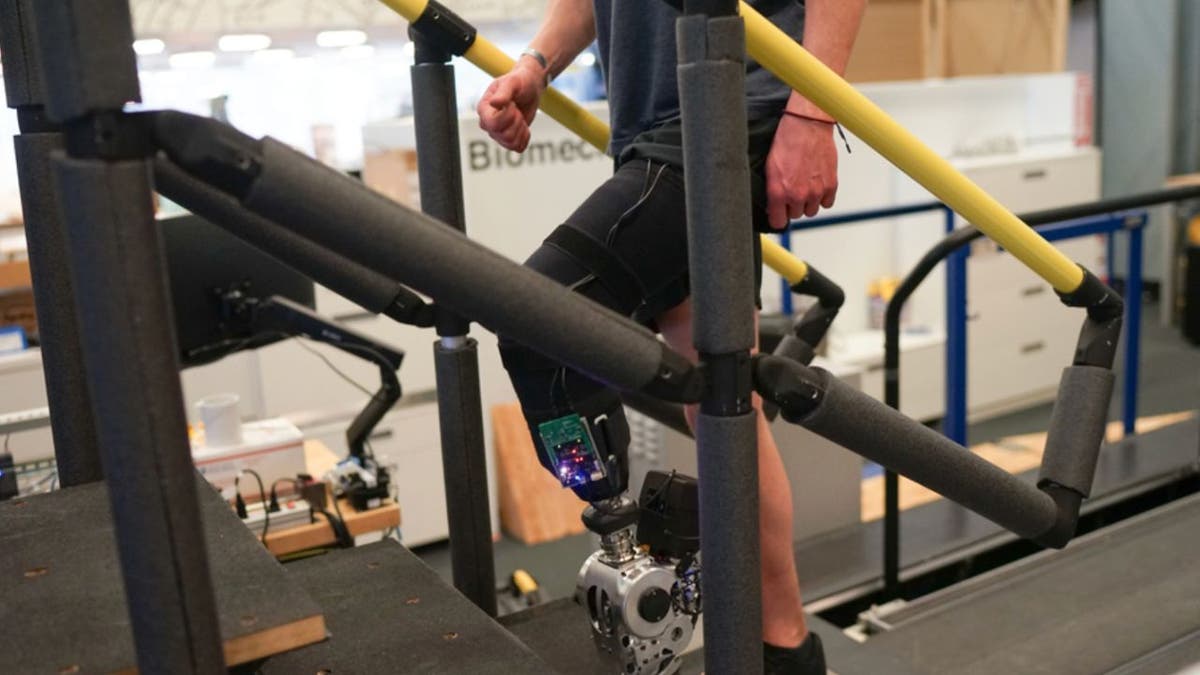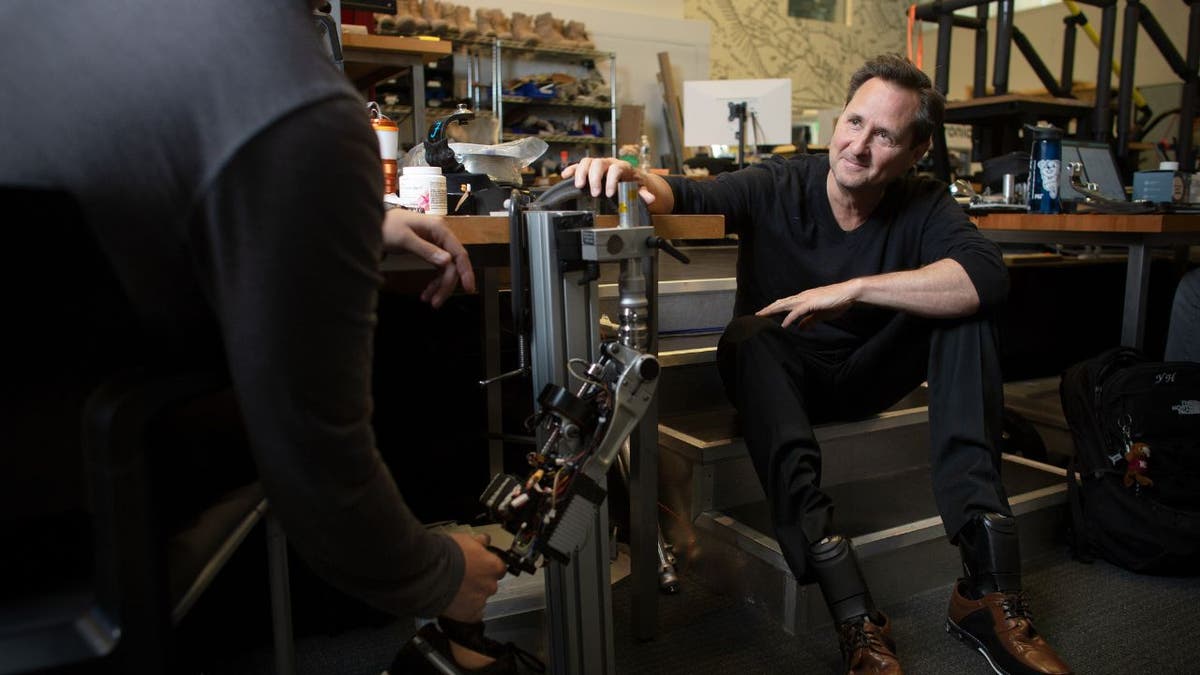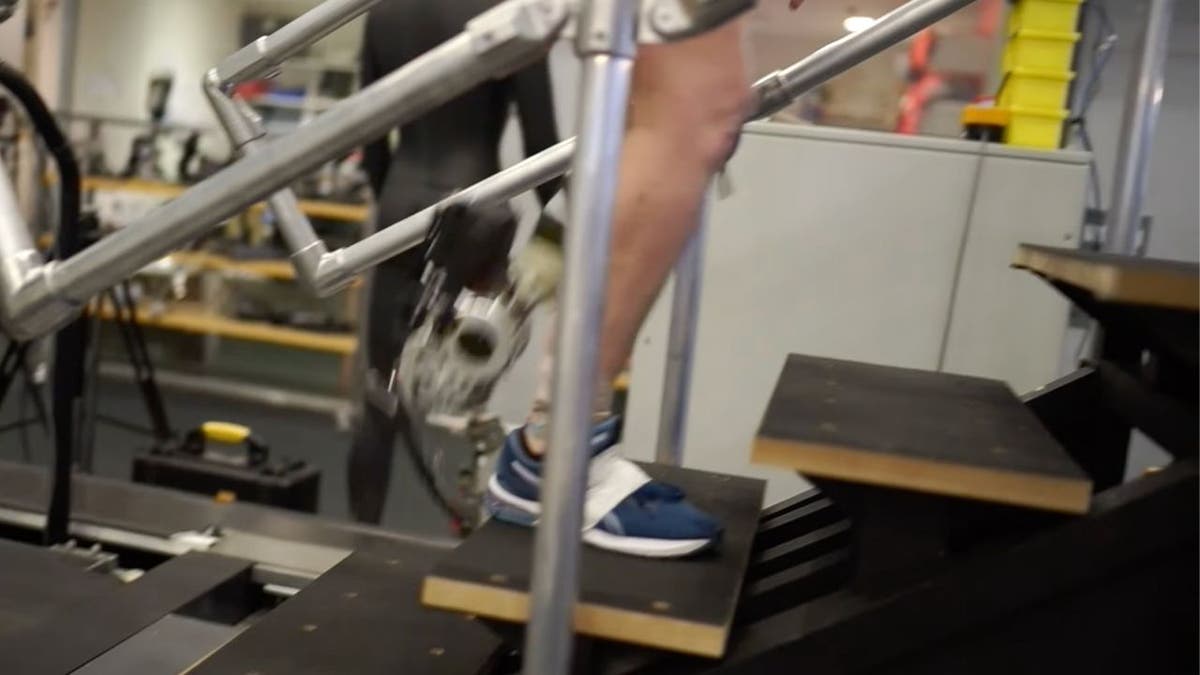Breakthrough prosthetic technology enables natural movement through nervous system connection
Researchers at MIT developed a neuroprosthetic system that allows users to control their prosthetic legs using their own nervous systems.
In the world of prosthetics, a groundbreaking advancement is changing the game for individuals with lower-limb amputations.
Researchers at MIT, in collaboration with Brigham and Women's Hospital, have developed a neuroprosthetic system that allows users to control their prosthetic legs using their own nervous systems.
This innovative approach could bring us closer to a future of fully integrated, naturally controlled artificial limbs.
GET SECURITY ALERTS, EXPERT TIPS - SIGN UP FOR KURT’S NEWSLETTER - THE CYBERGUY REPORT HERE

A person wearing the neuroprosthetic system (Hugh Herr and Hyungeun Song)
The AMI: A surgical game-changer
At the heart of this breakthrough is a surgical procedure known as the agonist-antagonist myoneural interface, or AMI. Unlike traditional amputation methods, the AMI reconnects muscles in the residual limb, preserving the natural push-pull dynamics of muscle pairs. This seemingly simple change has profound implications for prosthetic control and function.

Illustration of how the neuroprosthetic system works (MIT Media Lab)
Dr. Hugh Herr, a professor at MIT and senior author of the study, explained the significance: "This is the first prosthetic study in history that shows a leg prosthesis under full neural modulation, where a biomimetic gait emerges. No one has been able to show this level of brain control that produces a natural gait, where the human's nervous system is controlling the movement, not a robotic control algorithm."
HOW TO STOP ANNOYING ROBOCALLS

Dr. Hugh Herr pictured with the neuroprosthetic system (Jimmy Day, MIT Media Lab)
AI-DRIVEN EXOSKELETON LIGHTENS YOUR LOAD AND ELEVATES PERFORMANCES
The power of proprioception
The key advantage of the AMI system is its ability to provide users with proprioceptive feedback, the sense of where their limb is in space. This sensory information, often taken for granted by those with intact limbs, is crucial for natural movement and control. With the AMI, patients regain a portion of this vital feedback, allowing them to walk more naturally and confidently.
In the study, seven patients with AMI surgery were compared to seven with traditional amputations. The results were striking. AMI patients walked faster, navigated obstacles more easily and climbed stairs with greater agility. They also demonstrated more natural movements, such as pointing their toes upward when stepping over obstacles, a subtle but important aspect of a natural gait.
CYBERCRIMINALS TAKING ADVANTAGE OF CROWDSTRIKE-LINKED GLOBAL COMPUTER OUTAGE

A person wearing the neuroprosthetic system (Hugh Herr and Hyungeun Song)
Adapting to real-world challenges
One of the most impressive aspects of the AMI system is its versatility. Patients were able to adapt their gait to various real-world conditions, including walking on slopes and navigating stairs. This adaptability is crucial for everyday life, where terrain and challenges can change rapidly.
The system's responsiveness was put to the test in an obstacle-crossing trial. AMI patients were able to modify their gait to clear obstacles more effectively than those with traditional prosthetics. This ability to rapidly adjust to unexpected challenges is a hallmark of natural limb function and represents a significant leap forward in prosthetic technology.

A person wearing the neuroprosthetic system (Hugh Herr and Hyungeun Song)
AI WEARABLE CONTRAPTION GIVES YOU SUPERHUMAN STRENGTH
The science of sensory feedback
The success of the AMI system hinges on its ability to augment residual muscle afferents, which are the sensory signals sent from muscles to the nervous system. Remarkably, even a modest increase in these signals allows for significantly improved control and function. This finding highlights the incredible adaptability of the human nervous system and its ability to integrate and utilize even partial sensory information.
Dr. Hyungeun Song, lead author of the study, notes: "One of the main findings here is that a small increase in neural feedback from your amputated limb can restore significant bionic neural controllability, to a point where you allow people to directly neurally control the speed of walking, adapt to different terrain and avoid obstacles."
GET FOX BUSINESS ON THE GO BY CLICKING HERE

A person wearing the neuroprosthetic system (Hugh Herr and Hyungeun Song)
Looking to the future
While this research represents a significant step forward, it's just the beginning. The team at MIT is exploring ways to further enhance sensory feedback and improve the integration between the human nervous system and prosthetic devices. The AMI procedure has already been performed on about 60 patients worldwide, including those with arm amputations, suggesting broad applicability across different types of limb loss.
As this technology continues to evolve, we may see even more natural and intuitive control of artificial limbs. The ultimate goal is to create prosthetics that feel and function like a natural part of the user's body, blurring the line between human and machine.
SUBSCRIBE TO KURT’S YOUTUBE CHANNEL FOR QUICK VIDEO TIPS ON HOW TO WORK ALL OF YOUR TECH DEVICES

A person wearing the neuroprosthetic system (Hugh Herr and Hyungeun Song)
Kurt's key takeaways
The development of prosthetic limbs controlled by the nervous system marks the beginning of a new era in bionics. It offers hope for improved mobility, independence and quality of life for millions of people living with limb loss. Moreover, it provides valuable insights into the plasticity of the human nervous system and our ability to integrate with advanced technology.
As we continue to push the boundaries of what's possible in merging biology and technology, we open up new frontiers in human augmentation and rehabilitation. The implications extend far beyond prosthetics, potentially influencing fields such as neurology, robotics and even our understanding of human consciousness and embodiment.
CLICK HERE TO GET THE FOX NEWS APP
How comfortable would you be with technology that directly interfaces with your nervous system? Let us know by writing us at Cyberguy.com/Contact.
For more of my tech tips and security alerts, subscribe to my free CyberGuy Report Newsletter by heading to Cyberguy.com/Newsletter.
Ask Kurt a question or let us know what stories you'd like us to cover.
Follow Kurt on his social channels:
Answers to the most asked CyberGuy questions:
- What is the best way to protect your Mac, Windows, iPhone and Android devices from getting hacked?
- What is the best way to stay private, secure and anonymous while browsing the web?
- How can I get rid of robocalls with apps and data-removal services?
- How do I remove my private data from the internet?
Copyright 2024 CyberGuy.com. All rights reserved.





















